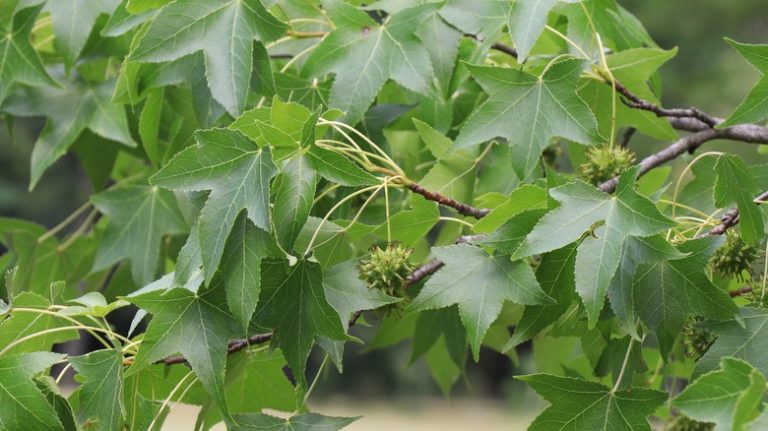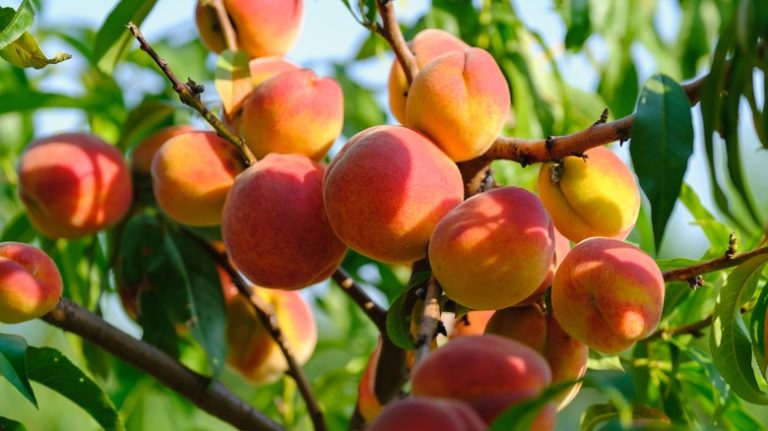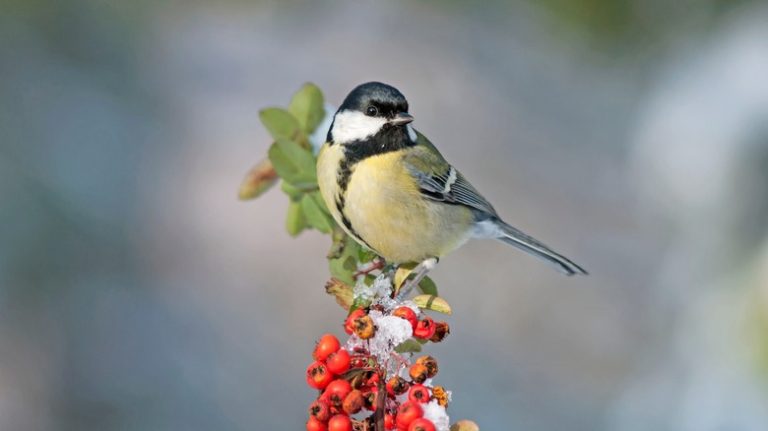Conifer trees are a type of tree typically found in coniferous forests, where they make up the majority of the tree population. There are many different types of conifers, and you can find them in various environments and regions all over the world. While they are most commonly associated with cold, mountainous areas, conifers can also be found in tropical regions.
Conifer trees are often characterized by their cone-bearing branches, which produce fruit known as cones. These trees can vary in size, with some species growing to be the tallest trees in the world, like the giant sequoias found in California. On the other hand, there are also smaller conifers, such as the pinyon pine, that have a more compact and thin foliage.
One of the best ways to identify conifer trees is by looking at their foliage. Unlike deciduous trees, conifers typically have needle-like or scale-like leaves that are present all year round. However, there are exceptions to this, such as the tamarack tree, which is a deciduous conifer that loses its needles in the winter.
In recent years, there has been an effort to classify conifers in a more accurate and comprehensive way. James Eckenwalder, a conifer expert, has submitted a list of 614 conifer species, which he has divided into 65 different genera. This classification takes into account various factors, including the shape and arrangement of branches, the size and shape of cones, and the presence or absence of certain characteristics, such as resin ducts or overlapping scales.
Overall, conifer trees play a crucial role in our ecosystems and contribute to the diversity of plant life on Earth. They provide habitat for many different species, including birds and squirrels, and also have economic importance, as they are often used for timber production. So the next time you come across a conifer tree, take a moment to appreciate its unique characteristics and the vital role it plays in our natural world.
Conifer Identification at Acadia
Conifers, also known as evergreen trees, are a class of gymnosperms that are typically found in the northern regions of the world. These majestic trees are characterized by their cone-shaped fruit and needle-like leaves.
At Acadia National Park, there is a diverse range of coniferous trees that can be found across the park’s various sites and mountains. The identification of these conifers can be an interesting and rewarding effort.
To identify conifers at Acadia, one can start by looking at the general features of the trees. Some common types of conifers found at the park include pines, firs, spruces, and hemlocks. These trees can be differentiated by their size, foliage, and other specific characteristics.
For example, white pines, which are one of the most common conifers in the park, have long, soft needles and large, cylindrical cones. On the other hand, the balsam fir, another common conifer, has shorter, flat needles and smaller, upright cones.
Another important feature to look for when identifying conifers is the structure of their branches. Some conifers, like spruces, have whorled branches that spiral around the trunk, while others, like firs, have branches that are more evenly spaced.
Conifers can also be identified by their bark. For instance, the eastern hemlock has a smooth, reddish-brown bark, while the white spruce has a rough, scaly bark.
Additionally, conifers can be identified by their cones. Each conifer species has a unique cone shape and size. For example, the cones of the eastern white pine are long and slender, while the cones of the eastern hemlock are small and round.
The foliage of conifers can also provide clues for identification. Some conifers have leaves that are flat and scale-like, while others have leaves that are sharp and needle-like.
Finally, an important aspect of conifer identification is understanding their habitat. Some conifers, like the red spruce, are typically found in higher elevations, while others, like the eastern white pine, are more commonly found in lower elevations.
By taking note of all these features and considering the specific conifers that are found in Acadia National Park, one can become more confident in their ability to identify these majestic trees. Whether you’re a casual hiker or a seasoned botanist, the diversity of conifers at Acadia offers endless opportunities for exploration and discovery.
So the next time you visit Acadia National Park, take the time to observe and appreciate the beauty of its coniferous trees. You never know what you might learn or discover about these fascinating trees.
What is a Conifer
A conifer is a type of tree that belongs to the group of plants known as conifers. These trees can be found across various mountains and forests, and they are typically identified by their needle-like foliage and the presence of cones. Conifers are usually tall and can grow to be some of the tallest trees in the world. Some common examples of conifers include pine, fir, spruce, and larch trees.
One way to identify a conifer tree is by looking at its branches. Most conifers have branches that grow in a spiral pattern around the trunk, while others, like the pinyon pine, have branches that are more irregular. Another way to identify a conifer is by examining its needles. Conifers have needle-like leaves that are usually green or grey in color, depending on the species. These needles also have a waxy coating that helps them conserve water.
Conifers can vary in size, from small shrubs to towering giants. For example, the bristlecone pine, which is found in the mountains of California and Nevada, is one of the oldest and tallest living trees in the world. On the other hand, the pinyon pine is a shorter conifer that is commonly found in the southwestern United States. Its needles grow in pairs and its cones are smaller than those of other conifers.
If you’re not sure how to identify a specific conifer, there are resources available to help you. Field guides, such as “Conifers of the World” by James Eckenwalder, list the characteristics of different conifer species and provide illustrations to assist with identification. You can also find identification keys online that will walk you through a series of questions to help you determine the species of conifer you’ve encountered.
It’s important to note that not all conifers are evergreen. While most conifers retain their needles year-round, some, like the larch tree, actually shed their needles in the fall. This deciduous trait can make the identification process trickier, as larch trees may be mistaken for other types of deciduous trees that are not conifers.
Overall, conifers are a diverse group of trees that provide essential habitat and resources for many animal species. They play a crucial role in forest ecosystems, and their conservation is important for maintaining biodiversity. Whether you’re a tree enthusiast or simply curious about the natural world, learning to identify conifers can open up a whole new world of discovery.
<>
conifer
Conifers are a group of gymnosperms, usually cone-bearing trees or shrubs. They are identified by their needle or scale-like leaves and their seed cones. Conifers can be found in many parts of the world, including North America and tropical regions. They are diverse in size and structure, ranging from tall, towering trees to small, shrubby plants.
When identifying a conifer, one can look at the specific characteristics of the needles, cones, and branches. Some common conifers include pine, spruce, fir, and larch. Although conifers are typically evergreen, meaning they retain their leaves throughout the year, some conifers, like the tamarack or eastern larch, are deciduous and lose their needles in the fall.
A recent effort to classify conifer trees has identified four main categories: pinaceae, cupressaceae, taxaceae, and podocarpaceae. Each category has its own unique characteristics and species. Conifers play an important role in conservation efforts, providing habitat for many species of birds and mammals, including the squirrel.
Conifers have thin, needle-like leaves or scales, and their cones are usually made up of scales. The size and shape of the cones can vary depending on the specific conifer species. Some conifers have small, round cones, while others have long, cylindrical cones.
Conifers are often used in landscaping and forestry. Their wood is commonly used in construction, furniture making, and paper production. Conifers also have medicinal properties and their oils are used in various products, such as perfumes and cleaning agents.
In conclusion, conifers are a diverse and important group of plants that can be found in many parts of the world. Whether you are a nature enthusiast, a conservationist, or just a curious individual, learning more about conifers can help you appreciate the beauty and significance of these remarkable trees.
General features
Conifer trees, also known as cone-bearing trees, belong to the class of gymnosperms. They are typically evergreen, meaning they have leaves that remain on the tree throughout the year. The leaves of conifers are usually needle-like or scale-like, rather than broad and flat like those of deciduous trees.
One of the defining features of conifers is their cone structure. Cones are the reproductive structures of these trees and can be found on branches or at the top of the tree. They contain seeds and are a common feature of coniferous trees.
There is a wide variety of coniferous trees found all over the world. Some well-known examples include pines, firs, spruces, and cedars. Each type of conifer has its own specific features and identifying characteristics, but they all share common traits such as cone-bearing and evergreen foliage.
| Common Name | Scientific Name | Distribution | Features |
|---|---|---|---|
| Pinyon Pine | Pinus edulis | Western USA | Short, stout needles; small cones with edible seeds |
| White Spruce | Picea glauca | Northern North America | Narrow, blue-green needles; cylindrical cones |
| Eastern Red Cedar | Juniperus virginiana | Eastern North America | Scale-like foliage; bluish fruits called “juniper berries” |
Identifying conifers can be a fun and educational activity. Depending on the specific type of conifer, you can look for features like needle length, cone shape, and bark texture to help in identification. Field guides and online resources can provide guidelines for identifying conifers in your area.
Conifer trees are an important part of many ecosystems, providing habitat and food for a variety of animals. They also have commercial significance, with their wood being used for construction, furniture, and paper production.
So next time you’re out in nature, take a moment to appreciate the beauty and diversity of conifer trees!
Diversity of size and structure
Conifer trees are known for their wide diversity in size and structure. In fact, most conifer trees vary greatly in their appearance and characteristics, making it important to understand the different types and guidelines for their identification.
Conifers are a class of plants that include various tree species, such as pines, spruces, firs, and cypresses. Although they share some common features, each type of conifer tree has its own unique set of characteristics that allows for easy identification.
One of the easiest ways to identify a conifer tree is by looking at its branches and leaves. Coniferous trees typically have branches that grow in alternating patterns along the main stem. Their leaves, often in the form of scales or needles, can range in length, size, and color. For example, the American larch has short, thin needles, while the giant sequoia boasts broad, scale-like leaves.
Another important feature to consider when identifying conifers is their size. Some conifer trees can grow to be the tallest plants in North America, such as the coastal redwood, while others, like the mountain pine, can be much shorter. By knowing the typical height range for a specific conifer tree, you’ll be one step closer to identifying it correctly.
In addition to height and leaf characteristics, cones are also an important clue for identifying conifers. Cone-bearing trees produce cones of various shapes and sizes, depending on the species. For example, the cones of the lodgepole pine are small and thin, while those of the sugar pine can be giant and heavy.
Overall, conifer trees offer a wide range of diversity in size and structure, making them some of the most interesting plants to identify and explore. Whether you’re an experienced botanist or just a curious nature lover, understanding the various features and classifications of conifers will greatly enhance your appreciation for these remarkable trees.



